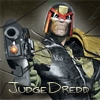kilowatts
Posts: 111
Joined: 9/15/2000
From: Howell,NJ, USA
Status: offline

|
quote:
Why would you say that?
Well okay, 'dead' is an overstatement. After all chess is still around - or so I hear.
Why I Hate Hexes, by Mike, aged 40 something, and a half.
Where did hexes come from? The hex is simply an artifact that was created by designers of board games so players can see and manage the location of units. Without a grid overlaid on the game map how could you tell where any unit actually was on the map? So unit movement is quantized by the grid - it can only be in one hex (usually) at any time. Hexes are used because they work better than squares at diagonal movement. But as mjk428 points out they still have problems.
- How big is a terrain feature, like a hill or a town? In hex-based games it either fills the hex or it doesn't exist (ASL had a work-around for some elements of this problem).
- Measurement between widely separated points (eg in calculating artillery or air range) is inaccurate.
- The rules for managing movement get extremely complex when different terrain types and movement classes are involved. Special rules are needed to handle the exceptions.
- Any hex based game has to place a limit on the number of hexes on the map, otherwise the map becomes unusable. The hex size is thus pretty much fixed by the map size. That automatically places a scale limit on the units involved OR peculiar results occur. For example in WitP the hex sizes are 60 miles, but the game allows a battalion to control the entire hex. To cope with this: more special rules and arbitrary limits.
That last point leads me to the thing I hate most about hex-based games...
ZOC
Not that I hate zones-of-control and only play games without them, or vice-versa. It's that the rules regarding ZOC are so arbitrary, regardless of whether a game has them or doesn't. Every game with ZOC has instances where neighbouring units should not have interacted. Every game without ZOC has instances where neighbouring units SHOULD have influenced each other but didn't.
But a computer doesn't need a grid to see where a unit is, it can know exactly where it is, down to cm if needed. A computer can know how much ground a unit covers, which way it is facing, what formation it is in. Most importantly a computer can show all that information to a player quickly and in a format which is visually easy to comprehend. Wait! the computer has only just got started. Besides this it can work the exact distance between units, even between individual weapons within units, know which way a unit can move and a computer can do away with ZOC by actually calculating the fire effects that neighboring units have on each other. That's only scratching the surface.
The arrival of wargames played on computers should have removed the need for hexes, but they're still going strong. I suspect it's because there's a lot of experience, and data, on designng hex-based games and that experience, and data, has simply shifted from paper maps to computer maps. The few non-hex based games on computer I've seen before mostly sucked. The one that didn't was Harpoon. At the time that Harpoon came out I thought it was only a question of time before the concept was applied to land combat. I was right, it just took longer than I expected. Developing wargames is hard work, I know because I've never done it. Most (all?) wargames use the existing knowledge base to make incremental steps. There's very little knowledge base for non-hex based games, but it's starting to build.
The shift away from hexes is underway. It started at the individual level - with flight simulations and first-person shooters. There are games available, or under development, which take the concept to higher levels. Take a look at the 'Eagle Day to Bombing the Reich' game forum here on Matrix. It's a evolutionary shift and the Airborne Assault series is just one step.
Thanks for listening,
Mike
Appendix A
A game can be non-hex based and still be 'turn' oriented. It could also be real-time and hex-based - but what would be the point in that? For a non-hex based game with 'turns' the process would work as follows: you would plot your actions for the next resolution period (= turn) whether it's a day or a week or a month. Your human or AI opponent does the same. When you both are ready a computer, could be yours or your opponents or a central server, resolves the plot. The resolving computer would not use the normal sequence of play we're all familiar with. Instead the computer will actually run a simulation of the units moving, firing, construction, demolition, servicing etc and record the results. Then you and your opponent receive the results and review what went on during the resolution. Based on the current information you'll make your new plot etc. The only difference between this and PCT is the P part. Pauses will be at fixed intervals, not as needed by the player.
Appendix B
The far future ... not only will future games be non-hex based and PCT they'll almost certainly be online as well. In that case you will be unable to tell whether you are playing a computer or a human. Even if you have chat turned on.
< Message edited by kilowatts -- 2/24/2007 1:36:10 AM >
|
 Printable Version
Printable Version











 - but the reviewers have been just as flattering :
- but the reviewers have been just as flattering : 




 I called the girl said they'll get back to me
I called the girl said they'll get back to me  On Friday night I'm sure of it
On Friday night I'm sure of it 




 New Messages
New Messages No New Messages
No New Messages Hot Topic w/ New Messages
Hot Topic w/ New Messages Hot Topic w/o New Messages
Hot Topic w/o New Messages Locked w/ New Messages
Locked w/ New Messages Locked w/o New Messages
Locked w/o New Messages Post New Thread
Post New Thread